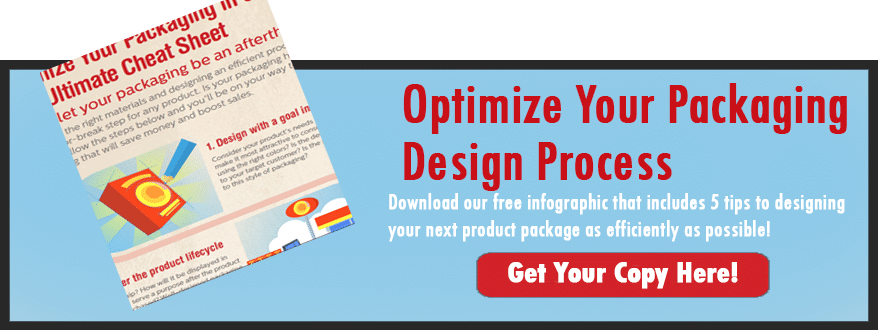3 Ways Your Business Can Reduce Packaging Waste
Packaging Materials | Environment | The Business of Packaging | Investment | Packaging Design | Food Packaging
As the need for more packaging rises, it's important to remember what that means for our environment. Because of this, many companies are starting to use or create a deadline for sourcing more sustainable packaging materials to ensure that the footprint they leave once the packaging becomes waste is minimal.
This post will share the different ways in which you and your team can help decrease packaging waste. These tips are easy to implement and will help both your company and the environment.
1. Consider the Packaging Materials Used
One of the best ways to decrease packaging waste is to start at the beginning with what you already have. Consider using reusable or recyclable materials, and you are already on your way to a win.
Get into the specifics of how you are packaging your products. Are you sure that the width of the film you are using is necessary for a proper seal? Sometimes reducing the packaging width by a small amount can not only reduce costs but drastically reduce the amount of waste created during the packaging process.
Can you make use of the packaging waste you create in the production of the finished goods? Beyond the production line, it may be worth considering waste for re-use around the office. If you don't need the packaging beyond its initial use, recycling is a great option. Not sure if an item is recyclable? No problem. There are many websites available to help you figure out what you can recycle and what you can't.
The number of items you regularly use around the office or plant that are fully recyclable may surprise you. Aluminum cans and foil, magazines, and even juice cartons can go right into the recycling bin (check first to see if you need to sort the different types of recyclables).
Be sure to download our free Packaging Design Efficiency Cheat Sheet to have on hand while you read. It offers insights into the best considerations to make when designing a new package, including how to manage waste.
2. Encourage Minimal Packaging
The shape and design of your packages is the most significant driver of material costs. Packages are also, of course, a key element in the success of any product. Starting with a package design that incorporates sustainability and recyclability helps the environment, but it also positions your company as a leader in package design.
The more minimalistic the package, the less waste created, leading to a reduced product cost. Reduced packaging also leads to consuming less energy to manufacture the material and the packaging, which produces even more savings. Plus, less fuel is used to transport smaller items, saving money there as well.
Designing packages to be minimal in terms of product waste does not mean you can't or shouldn't still be creative. Just because a design is minimal, doesn't mean it has to be boring.
Our Packaging Design Efficiency Cheat Sheet will help you weigh your options and determine the best course of action towards an attractive, creative package design that minimizes packaging waste.
Have you considered the amount of packaging you use for your products? In many cases, reducing the amount of packaging is a viable option that can save a ton in both cost and the waste created. A great example of this is the use of a corrugated tray to hold multiple products, like bottles of water, wrapped in polyethylene(PE) for security. With the right strength of film, the tray is almost always unnecessary as the PE is strong enough to secure the product without additional help. Consider dropping additional packaging on your goods to promote sustainability.
For wrapping products, consider a lower gauge of film or discuss the newer biodegradable options with your supplier. We offer suggestions for different types of flexible wrapping that best suit your needs in a recent blog post. You may notice that we don't discuss biodegradable film options, but there's a good reason.
Honestly, this is because we haven't found a film that will be both affordable and long-term viable for our customers and readers...
YET.
There are options out there, but the cost is just not sustainable right now for many of the businesses we work with, nor is the shelf life for their product. With newer technologies and research coming out faster than ever, I guarantee that this and last week's article will be updated to include these.
3. The Right Training is Important
The best way to make the most impact to increase sustainable packaging is to ensure that your entire team is adequately trained and follows the protocols that you've set up. After all, people are always your best resource.
Don't assume that staff is fully aware of the options and importance of using properly sized boxes, recyclable materials, etc. Communicating with staff is an easy way to get everyone on the same page, working together to increase efficiencies, save costs, and even protect the environment.
Make sure your commitment to reducing waste is clear, and is written down in multiple places (such as on easy-access bulletin boards and perhaps in a company newsletter or company-wide email), and emphasize the importance of ensuring that your workplace is one that values reducing waste.
Provide common examples of how every staff member can easily contribute to this cause, and model these steps yourself. Make recycling bins visible and easily accessible, ensure that proper size boxes are available for different items, and use shredding to your advantage.
Create a work environment that encourages idea-sharing. Your employees are the greatest asset you have to improve how you do business more sustainably. Give your team a safe place to share their ideas on improving your overall sustainability, and don't shun an idea that you don't agree with.
Not only will you create a more positive work environment where people feel included and their ideas valued, but you will also be able to gain insights for sustainable improvements that you may not have thought of prior.
What’s Next?
Reducing waste and disposing of it in an eco-forward manner will help your organization economically, both short and long term, and help keep the planet green. Implementing sustainable practices in your facility and encouraging your staff to embrace sustainable habits throughout organizational processes offers tremendous benefits. Promoting sustainability also looks excellent for your brand, and it's ownership of corporate responsibility!
About David Roberge
I am grateful to be part of the outstanding Industrial Packaging team. I am able to hang out with some of the most knowledgeable folks in the packaging industry. I feel even luckier that I am able to share that knowledge with you. I love learning, hiking, and growing people and teams both personally and professionally, and helping companies grow better.




